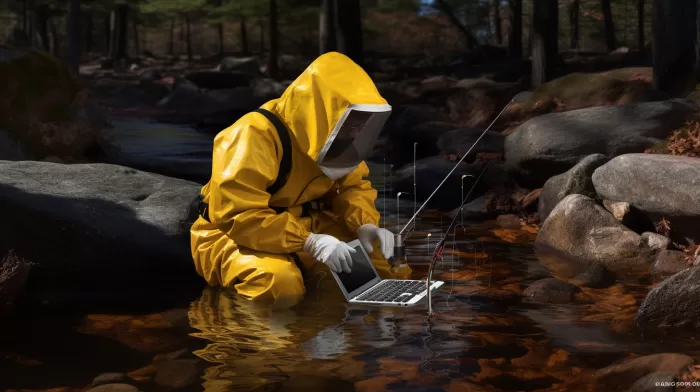It is truly astounding to realize just how interconnected our world has become. One prime example of this is when researchers from Dartmouth College discovered radioactive iodine in a local New Hampshire environment, thousands of miles away from the source of the contamination. The radioactive material was traced back to the Fukushima Daiichi nuclear disaster in Japan in 2011.
When Dartmouth researcher Joshua Landis and his team measured radioactive iodine being deposited in a stream called Mink Brook, they found that the rate had doubled as a direct consequence of the nuclear reactor’s explosion and subsequent meltdown in Japan. Although the radioactivity in New Hampshire is measurable, Landis points out that “at these levels, it is unlikely that this is going to cause measurable health consequences.” However, this discovery is a clear representation of just how far-reaching the effects of a nuclear disaster can be.
The Fukushima Daiichi Nuclear Disaster: A Brief Overview
On March 11, 2011, the largest nuclear disaster since Chernobyl in 1986 occurred at the Fukushima Daiichi nuclear power facility in Japan. Earthquakes and accompanying tsunamis damaged the cooling systems that regulated three reactors, causing them to overheat and eventually melt down. According to a report by the International Atomic Energy Agency (IAEA), the disaster led to the release of a substantial amount of radioactive materials into the environment.
The winds carried the radioactive plume from Japan across the Pacific Ocean, and traces of the contamination were eventually detected in multiple locations in North America. Radioactive isotopes, such as iodine-131, cesium-134, and cesium-137, are among the main substances released from the disaster. These isotopes have different half-lives, which affects how long they remain in the environment.
How Did the Radioactive Iodine Travel From Japan to New Hampshire?
As mentioned earlier, the winds played a significant role in carrying the radioactive materials from the Fukushima site to different parts of the world. The radioactive iodine found in New Hampshire was a direct result of the wind carrying the isotopes across the Pacific Ocean and depositing them in the United States.
Another factor that contributed to the wide distribution of radioactive materials is a process called bioaccumulation. Radioactive isotopes released into the environment can be absorbed by plants and animals, which then enter the food chain. As organisms higher in the food chain consume lower organisms, the concentration of radioactive contaminants can accumulate in their bodies.
Notably, while the radioactive iodine was only found in small amounts in New Hampshire, it still serves as a cautionary tale of how hazardous substances can travel vast distances and affect ecosystems far from the point of origin.
Dispersal and Dilution: Can It Be Dangerous?
Even though the amount of radioactive iodine discovered in New Hampshire by Dartmouth researchers poses no immediate threat to public health, it is essential to consider the implications for other areas with higher concentrations of contaminants. Additionally, the long-term impact of low concentrations on ecosystems and human health remains uncertain.
For example, bioaccumulation can lead to a phenomenon known as biomagnification. This occurs when organisms higher up in the food chain consume food that contains increasing concentrations of contaminants, thereby compromising the health of those organisms. The potential for biomagnification may prompt concerns about the safety of consuming fish caught in regions affected by the Fukushima disaster.
The Importance of Monitoring and Collaboration
Although no immediate health risks are associated with the radioactive iodine found in New Hampshire, the discovery highlights the need for more comprehensive monitoring in the wake of nuclear disasters. Radioactive elements can disperse widely and affect far-flung locations, and international collaboration is necessary for tracking and managing such contamination.
By working together, researchers and governments can work towards understanding the full scope and potential consequences of nuclear accidents, ultimately helping to prevent or mitigate future incidents.
In conclusion, the radioactive iodine discovered in New Hampshire is an eye-opening example of how interconnected our world is, reminding us that the actions and events in one part of the world can have wide-ranging ripple effects. As we continue to push for advancements in technology and power, it is essential to understand the potential consequences and work collaboratively to protect our environment and the health of our global community.



